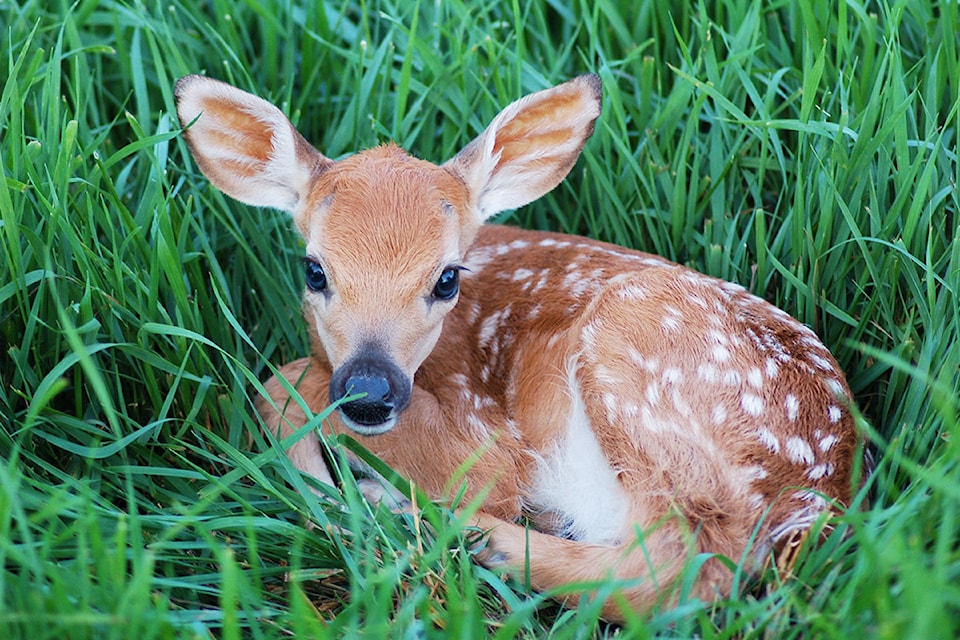The season for baby deer is upon us and the more you know about the habits of deer, the better the chances that baby deer (fawns) will remain with their mothers.
In the past, the North Island Wildlife Recovery Centre (NIWRA) would receive between 12 to15 orphaned fawns each year. We soon discovered it wasn’t always a case of the mother deer (doe) being dead or abandoning the fawn. In some circumstances, people walking through the woods had found a fawn that was nestled away in the tall grass and brought it into the centre. They did not understand that mother deer leave their fawns alone for a reason.
Fawns have incredible adaptations to help them survive. They have no scent which is why a doe will leave the fawn alone while she browses. Her scent will attract predators away from the fawn. As well, the spots and colouring of fawns will help camouflage them from predators as they lay motionless in tall grass or in the forest.
Our natural emotional response when we find a fawn alone, is to pick it up and feed it. But what should you do if you find a fawn and see no mother deer in sight? Please leave it alone unless you can verify the doe is dead or that the fawn has suffered a life-threatening injury.
If your children bring a baby deer home, take it back to where it was found. The mother will return. She is full of milk and the fawn will be hungry. Even if a fawn has been taken from its mother for many hours, it can be successfully reunited with her.
If you find a fawn laying out flat on the side or in the middle of the road, stop and gently guide it off into the bush or ditch. This will prevent other motorists from stopping or, tragically, hitting the fawn. The mother and fawn have become separated when crossing the road and she is probably watching you. The fawns tend to lay flat instinctively hoping you and other scares will go away.
If the doe is dead nearby and the fawn must be brought to the centre, do not try to feed it. Please leave that to the professionals at NIWRA. Thank you for caring about wildlife.
NIWRA, a non-profit organization, is situated in Errington. It is open to the public daily for viewing of non-releasable animals. Visit www.niwra.org to learn more about their programs, read stories about the animals and learn how you can help care for wildlife.

